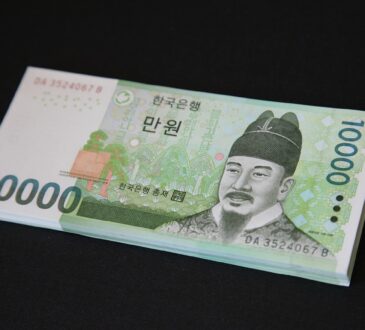
One popular strategy in the forex market is the carry trade, which involves borrowing in a currency with lower interest rates to invest in one with higher rates and gaining the difference.
The yen carry trade is one example, and it recently made headlines as it unwound, dragging down a few sectors in the market, including US tech stocks. The yen has traditionally been a funding currency. Its near-zero interest rate, combined with its liquidity, fueled its demand. Traders and investors borrowed it cheaply to fund other trades, including in US equities. But at the end of July, the Bank of Japan raised rates, and the currency strengthened, causing the trade to unwind.
As we near the end of 2024, the US central bank is expected to cut its rates, which will cause another round of currency market reshuffling. Other countries may also reshift their policies. Who knows what other hidden ticking time bombs may go off in the process?
Pete Mulmat, the CEO of Tastyfx, believes that volatility will increase over the next three to four months as uncertainty around the direction and pace of rate shifts will cause traders and investors to move assets around.
How a country’s currency and rates trickle into the wider global market varies. The dollar, yen, and euro, among other developed market currencies, provide very deep liquidity, making them the most popular to trade. But as you move out to emerging markets and their currencies, the depth of that pool and the participants that actively trade and hold them is dramatically less, he noted. Their illiquidity makes them harder to offload. It also means any unwinding could have a dramatic impact on their currency.
“So the yen has always been a great trade because even though we saw a tremendous move last Monday, it was relatively orderly; it was fast,” said Mulmat. “But you’re not going to get that kind of liquidity in some of these other emerging markets or frontier currencies where traders run down the last part of the rabbit hole trying to get that extra 200 or 300 basis points of return and are willing to accept trading a more potentially volatile and less liquid underline for that part of the carry.”
One of the wider spreads he’s referring to is the Chinese yuan to Mexican peso trade, which has become more popular over the last year, he said. Traders can borrow in yuan cheaply at an offshore overnight rate near 2% and then park it in pesos, where rates have been between 10.75% to 11%. And while the bulk of yuan-carry trades are against US assets such as stocks and bonds, swapping it for the peso was one way to go further down the rate divergence curve, he added.
But wider spreads also mean more risk because less liquid positions are also more volatile. If rates, currency values, or traders move, it’s harder to exit. This is especially the case for the yuan because it’s not fully convertible and is traded in non deliverable form on the currency markets, Mulmat said.
Right now, Mexico’s June elections rung in new leadership, which calls into question whether the country’s interest rates will remain the same. Markets reacted to the peso, which plunged in value by the most in almost 12 years, while the yuan strengthened, shaving the froth off some of that position, Mulmat noted. But since rates have not yet changed, it remains a popular trade, he noted.
On a positive note, if the yuan-to-peso trade unwinds, it won’t be as impactful to markets as the yen. However, it can still have knock-on effects. Investors who borrowed yuan to buy risk-free assets, like government debt in Mexico or the US, are also exposed. Any shift in the forex market would impact the value of the peso, and that’s the one thing that tends to dislodge these trades, he said.


